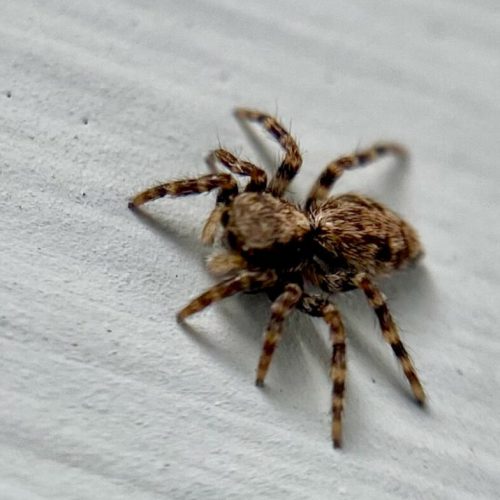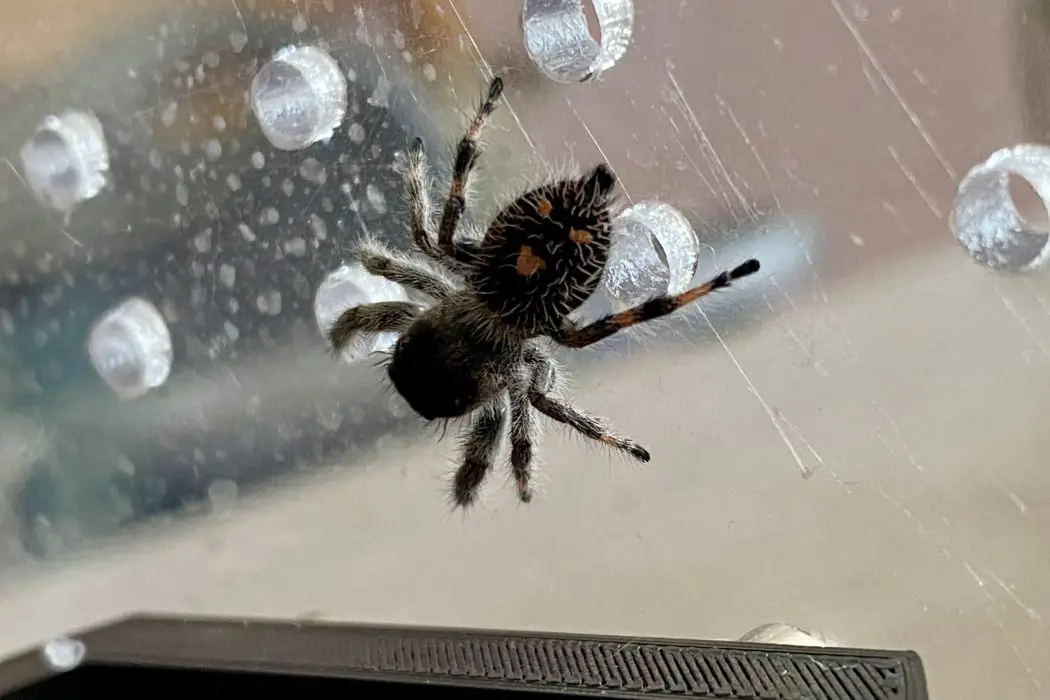What to Do If Your Jumping Spider Escapes
Whether the enclosure has been left open or it vanished during handling, an escaped jumping spider can be a stressful situation for the owner and the spider.
As tiny arachnids, getting lost in a human home isn’t difficult. With Phidippus Regius jumping spiders ranging from 6-22mm in body length, spotting an individual spider on the floor or between household objects would require better than 20/20 vision.
So, if your jumping spider does go missing, what can you do to find it safely? That’s exactly what this post aims to explain, but first, you should be aware of when escapes are most likely.
Most Common Jumping Spider Escapee Situations
In most cases, one of the three situations listed below is linked to the escape of a jumping spider:
Handling
When you handle your spider, you are often bringing it out into an open space in the room. While guidance states to keep the spider low, either near the floor or a flat surface, this only focuses on the safety of the spider; if it jumps, it will have somewhere to land.
However, this does not consider the likelihood of an escapee. Jumping spiders can jump and run very fast, disappearing from sight within seconds, so losing your pet when it is being handled is possible.
Leaving the Enclosure Open
Even the most careful spider owner can leave an enclosure door open sometimes, which can cause a curious jumper to go exploring. It might not be the fault of the owner either, as if the enclosure ventilation holes are too big, this can lead to a missing spider.
Molting
Although the spider has not escaped, it can be difficult to find during molts, especially for new jumping spider owners who are unaware of the way spiders shed their old exoskeleton. A jumping spider will hide in its hammock as it molts, and this can last for a few weeks in some cases, which can cause concern.
Staying on the Substrate
Unfortunately, as they get older, jumping spiders will struggle to climb and could stay on the floor. Similarly, a spider that has passed away will likely be on the substrate in a death curl.

4 Steps to Find an Escaped Jumping Spider
If your jumping spider has escaped, it is possible to lure it out of hiding and back to its enclosure. To do this safely, you should follow the steps outlined below:
Check Your Person First
Before moving, you should check the spider has not moved to another part of your body. Begin by raising your arms slowly, checking the undersides for the spider and any web lines it could have left. There is a good chance it could be attached to one of those web lines, similar to bungee cords, and hanging midair.
If the spider is not there, then you can move on to the rest of your body. This might require another person to look at your back; if you do ask someone for help, ensure they do this from a distance to avoid stepping on the spider.
Survey the Surrounding Area Carefully
Once you are certain the spider is not on you, begin checking all surfaces near you. To this with caution, you do not want to hurt the jumping spider accidentally. Inspect objects closely before moving them, as the spider could be on or close to it, and avoid sudden movements.
You might even want to use a torch to check darker areas and also look for evidence of webbing. Spider webs will usually shine slightly when a light hits it directly.
Leave the Enclosure Open
It isn’t unheard of for a spider to make its own way back to its enclosure after escaping or vanishing. This is why the enclosure should be left open until the jumper has returned.
Stick to the Care Routine
Even if the enclosure has no spiders in it, you should continue the same schedule with heating, lighting, and misting. Spiders will seek out light and warmth during the daytime; you can keep other lights off and curtains closed to guide your spider to the only light source in its enclosure.
Similarly, continue using a spray bottle to mist its enclosure regularly. An escaped spider will become thirsty at some point and go on the search for water.
By following these steps, you have the best chance of finding your lost jumping spider.
How to Prevent a Jumping Spider Escaping
If you are worried about your jumping spider escaping, there are several changes you can make to prevent escapees.
Choose the Correct Size of Enclosure
A small jumping spider should not be moved into a larger enclosure until it cannot fit through any possible escape routes. It can be tempting to give the spider as much space as possible, but this can lead to you losing track of the spider and it escaping.
One common way of escaping is through ventilation holes. Ensure your pet spider is bigger than these holes, or secure additional mesh over the holes to ensure the spider will not be able to squeeze through.

Handle the Spider Close to its Enclosure
As well as choosing flat surfaces, you should try to handle your jumping spider near its enclosure. This increases the chance of the spider finding its way back home if it does end up going missing.
Remember to Double-Check During Maintenance
Whenever you open the jumping spider’s enclosure, ensure you keep a close eye on where the spider is at all times. This will help you to track its movement and be ready for any escape attempts.
Also, you should get into the habit of double-checking that the enclosure door is closed correctly. Some enclosures can be fitted with additional locks that can add an extra level of security if you are worried about them escaping.
While preventing escapes is the best method, try not to be too hard on yourself if your pet jumping spider does escape. There is every chance it will find its way back to the enclosure, especially if you follow the tips in this article.
